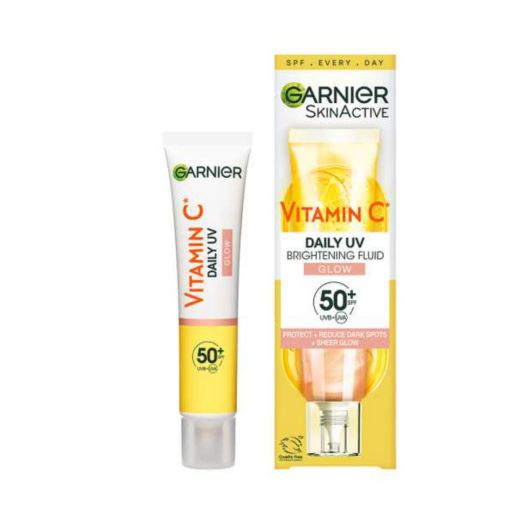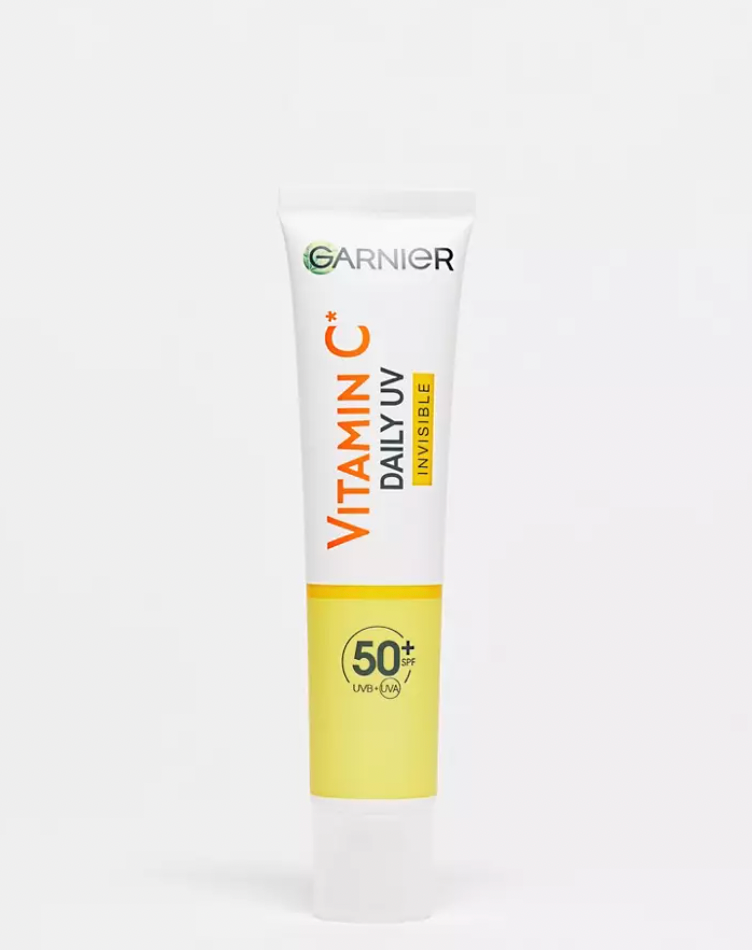This £13 Tinted SPF Is All My Beauty Editor Friends Can Talk About — It’s That Good
All linked products are independently selected by our editors. If you purchase any of these products, we may earn a commission.
Photo Courtesy of Jacqueline Kilikita.
Sunscreen is a non-negotiable in my morning skincare routine. But tinted sunscreen? Until now, it has never done very much for me. The products I’ve tried in the past have mostly been greasy, patchy or have turned my face and neck a dubious shade of orange throughout the day. Having given most a fair chance, I came to the conclusion that the perfect tinted sunscreen — one that applied easily, stayed put and didn’t come with a hefty price tag — was an impossible feat. The last detail is especially crucial considering there are major benefits to wearing and reapplying sunscreen come rain or shine. In other words, it shouldn’t be used sparingly.
AdvertisementADVERTISEMENT
When Garnier’s Vitamin C Daily UV Brightening Fluid Glow SPF 50+ landed on my desk, it was one of a handful of tinted sunscreens that had launched last month. It was the price — just £13 — that intrigued me the most, though. That, and the size of the tube (around 30% bigger than the rest). With costs rising left and right, value for money is important, and while I’m lucky to receive beauty products for my job, I will buy something if I really like it. Case in point: The Inkey List Bio-Active Ceramide Moisturiser, £19.
With a view to weaning myself off full coverage foundation this spring — and to strengthen my SPF game — I applied a heavy helping of Glow SPF 50+ one morning before heading out to run an errand. I was immediately surprised by the texture. It wasn’t oily like the others and didn’t require any shaking. Instead, it had a gel-like consistency that absorbed quickly without collecting in my eyebrow hairs or around dry patches of skin. It wasn’t until I caught a glimpse of myself in the mirror in the lift that I realised the brand wasn’t messing around with the word “glow”: It made my skin gleam in all the right places without so much as a single shimmer particle. My skin simply looked dewy, plump and healthy. I’d actually planned to return home and apply a little concealer ahead of a day out with friends, but the coverage was substantial enough to skip it entirely.
AdvertisementADVERTISEMENT
What is the difference between a mineral and a chemical sunscreen?
The silky texture is likely down to the type of sunscreen it is — a “chemical” sunscreen — which means the UV filters are synthetic; they absorb harmful UV rays and convert them into heat that is then released from the body before they can do any damage. In addition to a lighter texture, chemical sunscreens are less likely to leave behind a telltale white cast on darker skin compared to a mineral or physical sunscreen that enlists filters like zinc oxide. They are also typically favoured by those with oily and acne-prone skin, like me. Without taking you back to chemistry class, the main UV filter in this sunscreen is bis-ethylhexyloxyphenol methoxyphenyl triazine; it boasts broad spectrum protection, so it shields against both UVA (responsible for skin cancer and premature ageing) and UVB rays (which result in sunburn).
What are the benefits of combining vitamin C with sunscreen?
Glow SPF 50+ also boasts vitamin C, which is often referred to as L-ascorbic acid in ingredients lists. Looking closely at this list, the exact version of vitamin C in Glow SPF 50+ is is ascorbyl glucoside, extracted from vitamin C. GP and dermatology expert Dr Anita Sturnham once told me that it’s the only vitamin C derivative which is converted into ascorbic acid in the skin. In short, it’s a little less potent; it will give you all of the ascorbic acid benefits (brightening and protecting against environmental aggressors like pollution) without causing sensitivities. Its addition makes sense: When combined, vitamin C and sunscreen work synergistically to protect skin from UV rays.
AdvertisementADVERTISEMENT
That’s the science out of the way. If the product rings a bell, it’s probably because it has just gone viral. TikTokers are especially impressed by its “non-ashy” finish on darker skin tones and have praised it for being “brown skin friendly”. Garnier claims that it “perfectly blends with different skin tones and types,” but if you aren’t sold on tints, there’s a tint-free version, which is just as excellent: Garnier Vitamin C Daily UV Fluid SPF 50+ Invisible, £13.
Is the Garnier Vitamin C Daily UV Brightening Fluid Glow SPF 50+ good?
Aside from TikTok, I realised that this sunscreen was really something when it happened to be the talk of the table at a launch party for an entirely different SPF brand (one with much higher prices). A quick call out to my beauty editor friends proved that it has quite a few fans. Denise Primbet, beauty journalist at Glamour is equally as obsessed: “I’m a true skincare stan and SPF and vitamin C are my two holy grails,” she says. “I’m also a firm believer that quality skincare doesn’t have to come with a premium price tag.” As such, Garnier’s latest hybrid SPF intrigued her. “It gave me that ‘lit-from-within’ glow with no greasiness in sight, and it felt super hydrating on my dry and sensitive skin,” says Primbet. “I honestly cannot recommend it enough for when you need to be out-the-door ASAP and there’s barely any time for the usual five-plus step skincare ritual. Hands down, it’s one of the best Garnier products I’ve tried.”
AdvertisementADVERTISEMENT
The Telegraph’s beauty director Sonia Haria has spoken highly about it on Instagram, particularly the way it blends easily and sits under makeup, while freelance beauty editor Cassie Powney is also sold: “At first glance, this looks like any other tinted moisturiser,” Powney says, but it delivers so much more: “A light, fresh formula and super-flattering glow, not forgetting the all-important SPF 50+. It has put my £35 Supergoop! Glowscreen out of a job.” Powney adds that it feels “too nice” to be a high-factor sunscreen, but formulas like this one have come a long way from the unctuous, chalky creams that we’re used to.
How do you apply tinted sunscreen?
There is one thing I want you to know, though. When it comes to tinted sunscreen, most of us tend to apply far less than we need to adequately protect our skin. Dermatologists typically recommend a teaspoon amount for the face and neck, but I prefer the easier method of applying three full finger length’s worth. This might seem like a lot of product, but thanks to the added vitamin C as well as glycerin (a skin-quenching ingredient found in all good moisturisers) I can easily skip both my serum and moisturiser steps. Most mornings, this is all I need.
With that in mind, I have a feeling it will sell out fast, but until then, you can shop it at Amazon.
AdvertisementADVERTISEMENT








